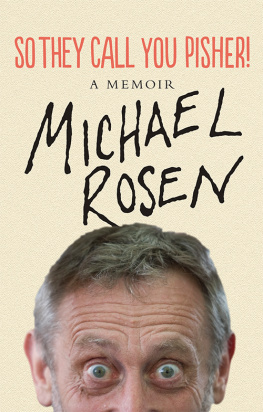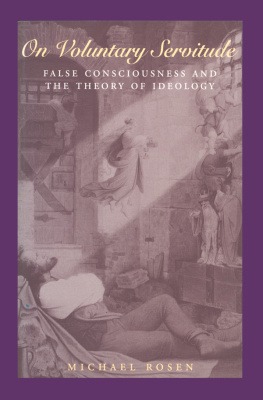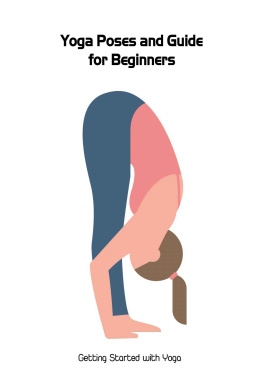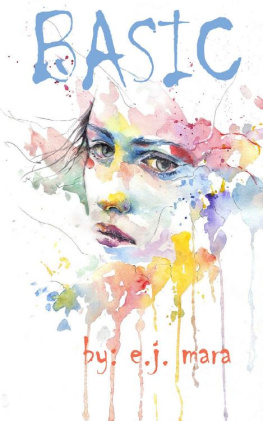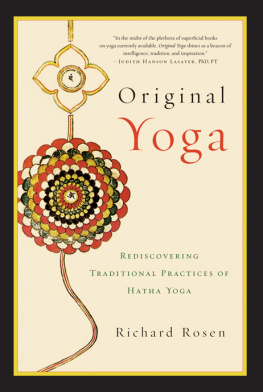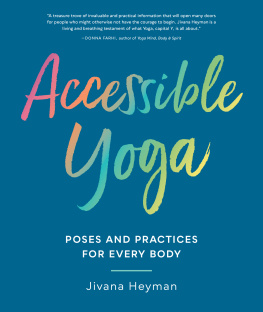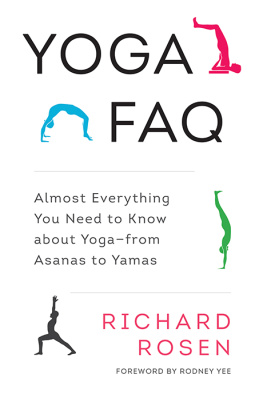As we navigate our way through the waters of modern yoga, its imperative that we understand its original intentions. Richard Rosen has dived deep into the old ways and come back up to lead us back to the source.
Rodney Yee
ABOUT THE BOOK
Widely respected yoga teacher and author Richard Rosen draws on ancient yoga encyclopedias to explain how yoga was practiced before it became popular in the West. He compares the three main existing sources known to yoga scholars to describe how complex and rich the practice of yoga once was. It included systematic teachings on personal hygiene, good health, and good relationships, and other practices of yoga that went far beyond just the physical postures.
Each section of the book offers a guided practice session of ancient poses and breathing techniques to enable readers to connect to the roots of their yoga and to offer a framework from which to understand the sequences they use in their regular sessions.
RICHARD ROSEN is a graduate of the Iyengar Institute of San Francisco and has been teaching yoga since 1987. He is a contributing editor at Yoga Journal magazine and director of and one of the principal teachers at the Piedmont Yoga Studio (cofounded by Rodney Yee), in Oakland, California. Many of Rosens practice instructions and technical teachings are posted on the Piedmont Yoga Studio website, www.piedmontyoga.com.
Sign up to learn more about our books and receive special offers from Shambhala Publications.

Or visit us online to sign up at shambhala.com/eshambhala.
ORIGINAL YOGA

Rediscovering Traditional Practices of Hatha Yoga
RICHARD ROSEN
Illustrations by Evan Yee

SHAMBHALA
Boston & London
2012
Shambhala Publications, Inc.
Horticultural Hall
300 Massachusetts Avenue
Boston, Massachusetts 02115
www.shambhala.com
2012 by Richard Rosen
All rights reserved. No part of this book may be reproduced in any form or by any means, electronic or mechanical, including photocopying, recording, or by any information storage and retrieval system, without permission in writing from the publisher.
Library of Congress Cataloging-in-Publication Data
Rosen, Richard.
Original yoga: rediscovering traditional practices of Hatha yoga / Richard Rosen.1st ed.
p. cm.
Includes bibliographical references and index.
eISBN 978-0-8348-2740-0
ISBN 978-1-59030-813-4 (pbk.: alk. paper)
1. Hatha yoga. I. Title.
BL1238.56.H38R67 2012
613.7046dc23
2011025817
Dedicated to my two best yoga friends
RY and TL
When it comes, youll be dreaming
that you dont need to breathe;
that breathless silence is
the music of the dark
and its part of the rhythm
to vanish like a spark.
WISAWA SZYMBORSKA,
Im Working on the World, from Calling Out to Yeti (1957)
CONTENTS
FIRST AND ALWAYS, thanks to Shambhala for giving me the opportunity to write this book, and to the two best editors in the world, Beth Frankl and Emily Bower, for all the invaluable help they gave me to make this book interesting and entertaining. Id also like to thank my model, Chrisandra Fox, for her sterling performance of the poses in this book, and the artist, Evan Yee (whose father, I understand, is a yoga teacher), who turned my crude photos of Chrisandra into delicate line drawings. Finally, as always, thanks to all my teachers on whose shoulders Im precariously perched, hoping to see a little bit farther into the distance. As usual with whatever I write, everything of value comes from them, while all the mistakes are mine alone.

The Time Has Come to Talk of Many Things
LET ME BEGIN by saying something about what I mean by original yoga. Your immediate thought might be that what Im presenting is a brand-new style of yoga, something original Ive dreamed up that will join the ever-lengthening lineup of modern schools. But no, whats going on here is just the opposite. The original yoga Ill be talking about first is, as the books subtitle suggests, traditional Hatha Yoga, which emerged around 900 C.E., give or take a couple of centuries in either direction. Of course, Hatha Yoga isnt the original yoga, the yoga school that preceded all others. That distinction formally belongs to the system outlined in Patanjalis Yoga-Sutra, compiled sometime between 200 B.C.E. and 200 C.E. But traditional Hatha Yoga does precede and is the original version of what well call modern Hatha Yoga, which began taking shape in the early decades of the twentieth century.
You may wonder why Im making a distinction between traditional and modern Hatha Yoga. Isnt it all the same? Surprisingly, the answer is a resounding no. First of all, traditional Hatha Yoga, as it was practiced in India between the tenth and nineteenth centuries, certainly didnt stay the same all that time. If we compare the practice outlined in one of the schools granddaddy instruction manualsthe mid-fourteenth-century Hatha-Yoga-Pradipika (Light on Hatha Yoga)with that of one of its distant relativesthe late seventeenth-century Gheranda-Samhita (Gherandas Compendium)we find quite a few significant differences, not the least being that asana plays a much more important role in the latter book. But if we put the Gheranda-Samhita alongside one of its contemporaries, the Shiva-Samhita (Shivas Compendium), we again find differences galore, such as the fact that asana is hardly mentioned at all in the latter. So first we need to recognize that the Hatha tradition isnt carved in stone; over its thousand-year run, it went through any number of changes, just as all of us do as we grow older. Our first order of business will be to look at this tradition as its reflected in the three aforementioned books, taking the Gheranda-Samhita as our primary source backed up by the other two. Ive chosen these three books because generally theyre the easiest to come by in English translation. But be sure you understand that there are plenty of other books in the Hatha tradition, some a lot older than the Hatha-Yoga-Pradipika, some a bit younger than the Gheranda-Samhita and Shiva-Samhita.
Why do this at all, though? For the same reason many people look into their familys history: to better understand our present by delineating our past.
But what about the present? The changes the traditional practice went through over the centuries might be considered organic, common to any living organisms natural evolution. What happened to Hatha Yoga in the early years of the twentieth century, by contrast, happened virtually overnight and was totally person-made, or artificial. The full story is too long to tell here and has already been masterfully recounted from slightly different perspectives by British researchers Elizabeth de Michelis in A History of Modern Yoga (Continuum, 2004) and Mark Singleton in Yoga Body (Oxford University Press, 2010; not to be confused with Judith Lasaters book Yogabody). Suffice it to say that by the end of the nineteenth century in India, Hatha had fallen on hard times and was on its last trembling leg. Several Indian teachers set out to save Hatha from oblivion; among them was Tirumular Krishnamacharya, whose work provided the impetus for three of our most popular and influential modern teachers: T. K. V. Desikachar (whose teaching was once known as Viniyoga, a term that has since been abandoned); the late K. Pattabhi Jois (who taught Ashtanga-Vinyasa Yoga); and B. K. S. Iyengar, who (though he often adamantly insists theres no such thing) created Iyengar Yoga. And save Hatha the teachers did. You may have heard or read somewhere that yoga is five thousand years old, a number thats continually cited by people who should know better, since theres not a shred of concrete evidence to back it up. What we do know for certain is that the yoga we practice in the West is no more than one hundred years old. Our Indian teachers took what was once the province of a relatively small, loose-knit, mostly male ascetic community that was resolutely living on the fringes of respectable Indian society and transformed it into a worldwide mass movement open to anyone of any age, gender, or physical condition. This is the second meaning of
Next page

